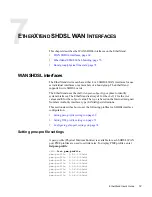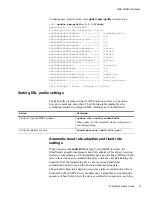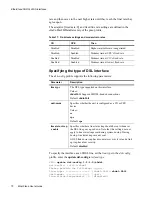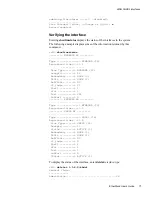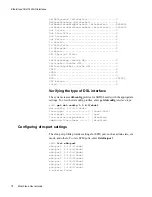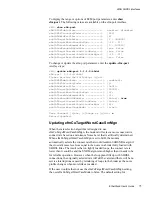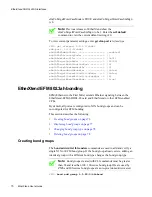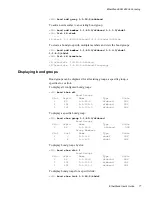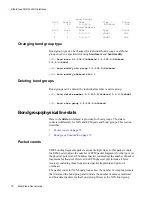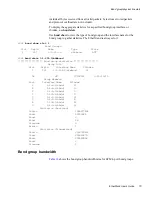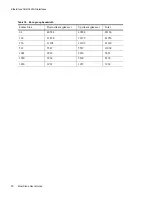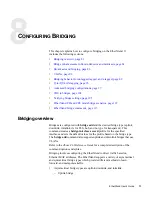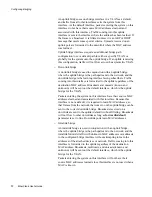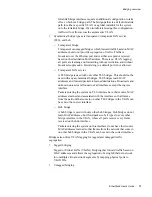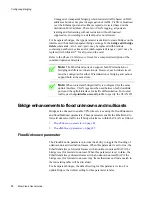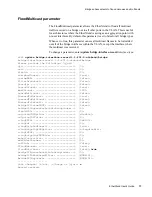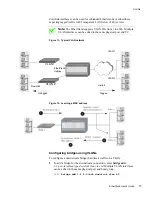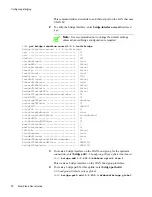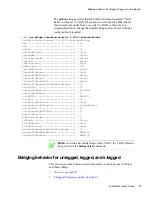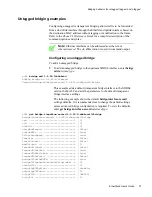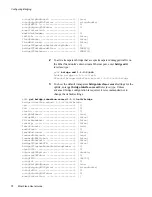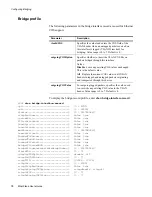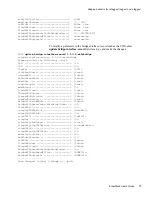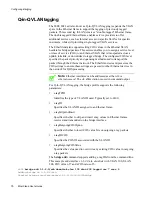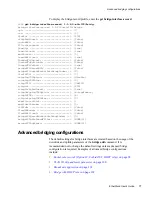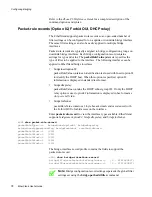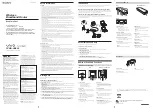
Bridging overview
EtherXtend User’s Guide
83
Intralink bridge interfaces require an additional configuration to take
effect, which is a bridge-path. The bridge-path sets a default intralink
path for either a specific VLAN or a global intralink for the system
onto the intralink bridge. If an intralink is missing this configuration,
traffic will not flow across the asymmetric VLAN.
•
Symmetrical bridge types are transparent, transparent LAN service
(TLS), and hub.
–
Transparent bridge
Transparent or untagged bridges which forward traffic based on MAC
addresses but do not provide segregation of traffic. Traffic is
broadcast over the Ethernet port and is either accepted or rejected
based on the destination MAC address. There is no VLAN tagging;
all ports are learning and forwarding without restriction and without
broadcast suppression. Forwarding to a default port is not allowed.
–
Transparent LAN service
A TLS bridge is used with only other TLS bridges. This should not be
used with any asymmetrical bridges. TLS bridges learn MAC
addresses and forward packets to learned destinations. Broadcasts and
unknown unicasts are flooded out all interfaces except the ingress
interface.
Packets entering the system on TLS interface have their source MAC
addresses learned and associated with the interface so that frames
from the network that come in on other TLS bridges in the VLAN can
be sent to the correct interface.
–
Hub bridge
A hub bridge is used with only other hub bridges. Hub bridges do not
learn MAC addresses, but flood packets of all types to every other
bridge interface in the VLAN, where all ports receive every frame
received on the hub interface.
Packets entering the system on this interface do not have their source
MAC addresses learned so that frames from the network that come in
on other hub bridges in the VLAN can be sent to the correct interface.
Bridges also utilize VLAN tagging for tagged and untagged traffic
segregation.
•
Tagged bridging
Tagged or Virtual LANs (VLANs) bridging that forward traffic based on
MAC addresses and allows the segregation of a single Ethernet network
into multiple virtual network segments by mapping physical ports to
VLAN IDs.
•
Untagged bridging
Summary of Contents for EtherXtend 3300 Series
Page 8: ...Contents 6 EtherXtend User s Guide...
Page 18: ...Overview 16 EtherXtend User s Guide...
Page 70: ...Basic Configuration 68 EtherXtend User s Guide...
Page 132: ...Advanced Configuration 130 EtherXtend User s Guide...
Page 146: ...IP Service Level Agreement 144 EtherXtend User s Guide...
Page 150: ...Index 148 EtherXtend User s Guide...

